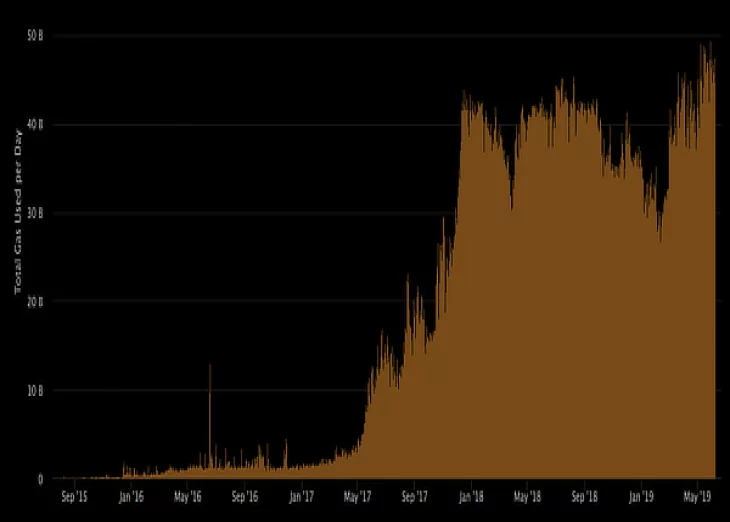Airdrop Takes 60% of Ethereum’s Network

A token no one has heard of is eating 60% of ethereum’s capacity through an airdrop to countless of accounts.
More Gold Coin, which doesn’t even have a website that we can find, is currently consuming close to 59% of all ethereum’s gas (capacity unit).

You would think this would send transactions skyrocketing, but gas or capacity and transactions are not quite the same.
Gas is somewhat similar to bytes in bitcoin, that is how “big” a transaction is. So you can have one transaction that consumes as much capacity as 100 transactions.
Ethereum transactions therefore have actually fallen in number because this token is performing more computationally intensive calculations which are taking more gas than plain transactions where you send an eth from A to B.

As can be seen, transactions have dropped close to 750,000 even though they were somewhat stable at about 950,000.
That may be because this gas guzzler might have thrown off fee estimators, so perhaps delaying some transactions.
Ethereum fees, however, are still very low at just 10 cent for a fast transaction according to ETH Gas Station, although we’re not very sure of this estimate because it is the same 10 cent for fast, standard, and slow.

Usually, of course, there’s a difference between speed and fee levels, with this estimates obviously not very scientific.
Dapps and wallets nowadays provide a range for fees, and in some cases they just recommend an upper limit of how much you’re willing to pay in fees, with it then paying the going rate.
So considering this airdrop is taking up 60% of the network, what the fees really are is not very clear.
Fees moreover vary depending on what action is being performed. A simple transfer from A to B may well cost 10 cent, but if you’re transferring say a Cryptokittie, it might be quite a bit more.
In addition, there are potentially a lot of refinements at the protocol level. Gas technically is a sort of computational measure to prevent indefinite loops as ethereum is Turing complete. Yet it is also being used to limit the amount of data that is included in the network.
In some ways, however, or in some cases, data and the amount of gas used have almost nothing to do with each other. You can use a lot of gas while the blocksize is the same as if you barely used much at all.
When airdrops were a lot more prevalent, that became obvious last year as although gas usage was full, uncle rates dropped considerably even before there were improvements at the protocol level.
Meaning a gas limit is not a very good way of controlling capacity because the same amount of gas can be used while a different amount of data is transferred and of course it is data that limits capacity at the current stage.
Tons of improvements are on the pipeline, however, both in eth 1x and in eth 2.0, but for now a more judicial use of the blockchain is advised.
Copyrights Trustnodes.com














Article comments